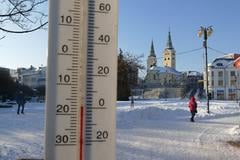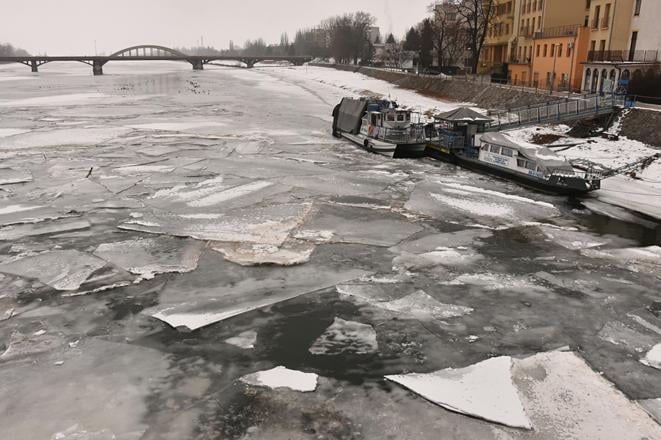While last year was unusually warm and wet in Slovakia, with a positive temperature deviation of 1.4 degrees Celsius making 2016 the seventh warmest year since 1931, January of the current year brought the lowest temperatures since 1987.

2016 was the warmest of the past 137 years worldwide. As for Slovakia, all seasons last year were warmer than usual, with last winter being outstandingly warm – up by 3 degrees Celsius, said Jozef Pecho, climatologist of the Slovak Hydro-meteorological Institute (SHMÚ), as cited by the TASR newswire.
February was as much as 4.8 degrees Celsius warmer than normal. The daytime high of 20.3 degrees Celsius measured in Bratislava in the second half of February was the highest February temperature recorded in Slovakia since 1551. The warm winter last year was followed by a warm spring and an extraordinarily warm summer with a positive deviation of 2 degrees Celsius.
“It felt as if the summer was relatively colder, because there were fewer tropical days [30+ degrees Celsius – ed. note], but there were seven more summer days [25+ degrees Celsius] than in 2015,” said Pecho.
Nonetheless, there were only two relatively more pronounced heat waves last year – one in the latter half of June and one in early September.
Apart from February, June (+2.5 degrees Celsius), July (+2.1 degrees Celsius) and September (+2.4 degrees Celsius) were the warmest months compared to their respective long-term averages.
Conversely, October was 0.6 degrees Celsius colder than the average.
The highest temperature in Slovakia in 2016 was seen in Holíč (Trnava Region) on June 24 – 36.2 degrees Celsius. On the other hand, the lowest temperature of the year was recorded in Oravská Lesná (Žilina Region) on January 23 – minus 24.2 degrees Celsius.
“When it comes to precipitation, 2016 was even more in the foreground than with temperature,” said climatologist Pavel Faško, adding that 2016 in Slovakia was among the 10 rainiest years at least since 1881, with 895 millimetres of water per square metre – representing 122 percent of the average measured between 1961 and 1990.
February was again the most conspicuous month with its precipitation reaching as much as 320 percent of the normal value. Conversely, December with 57 percent of the average was the driest month vis-a-vis the usual records.
The most intense rain was seen in Dolná Poruba (Trenčín Region) on July 27 – 110 millimetres on one square metre per hour, while at one point it was as much as 91 millimetres per 30 minutes.
“It was a truly unusual precipitation intensity for Slovakia,” said Faško, adding that only favourable geological conditions saved the area from an extensive flooding.
Cold January 2017
On the other hand, Slovakia has experienced its first January with subnormal temperatures in 30 years. The beginning of the year was marked by a significant drop in temperatures, with the cold spell starting around Epiphany (January 6) and setting the tone for the entire month.
“The younger generation of people have never had such experience in January,” said Faško, pointing out that Slovaks are no longer used to such a freezing start to the year.
Throughout January, SHMÚ recorded the highest number of days of extreme cold in Slovakia this century, with many local temperature records.
In Dudince (Banská Bystrica Region), the temperature plummeted to -30.3 degrees Celsius, an all-time low for the area in recorded history, while Oravská Lesná (Žilina Region) saw -35.5 degrees.



 (source: TASR)
(source: TASR)